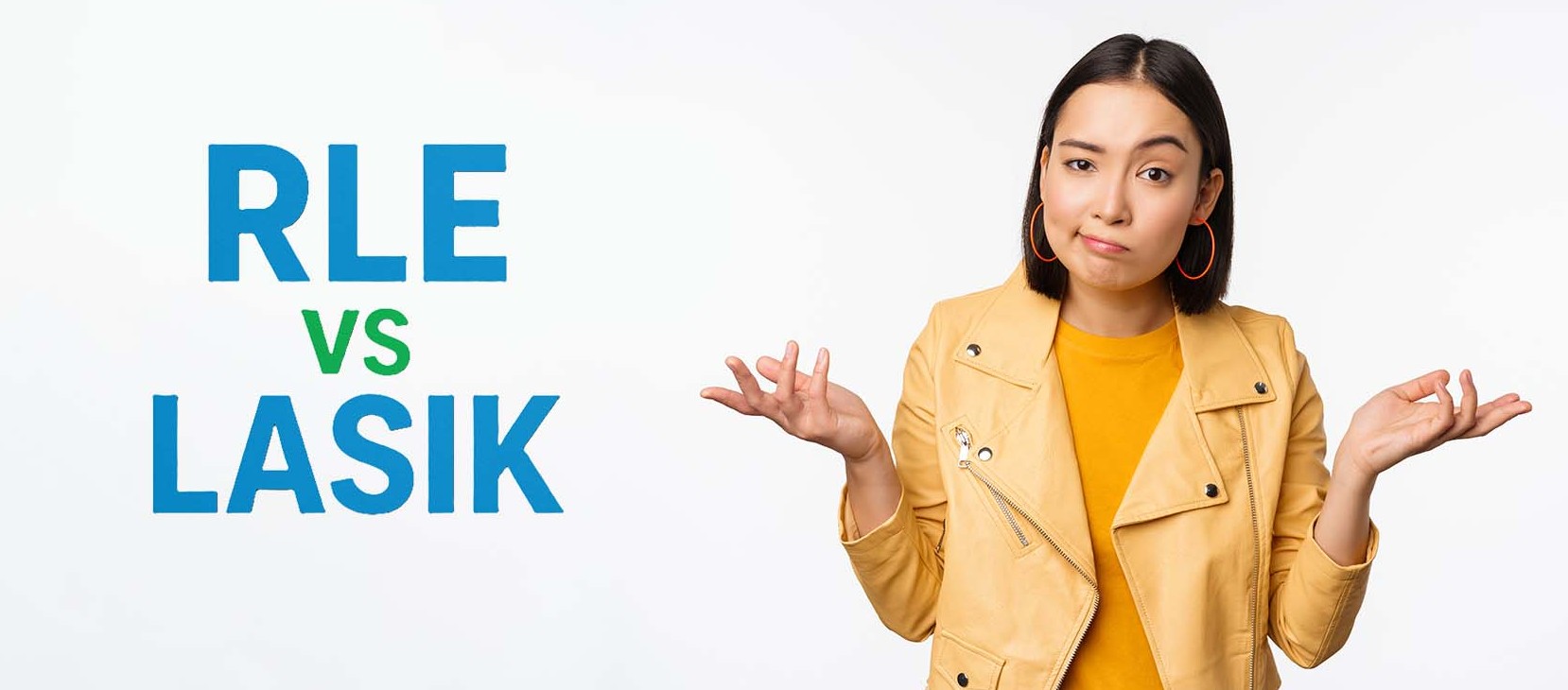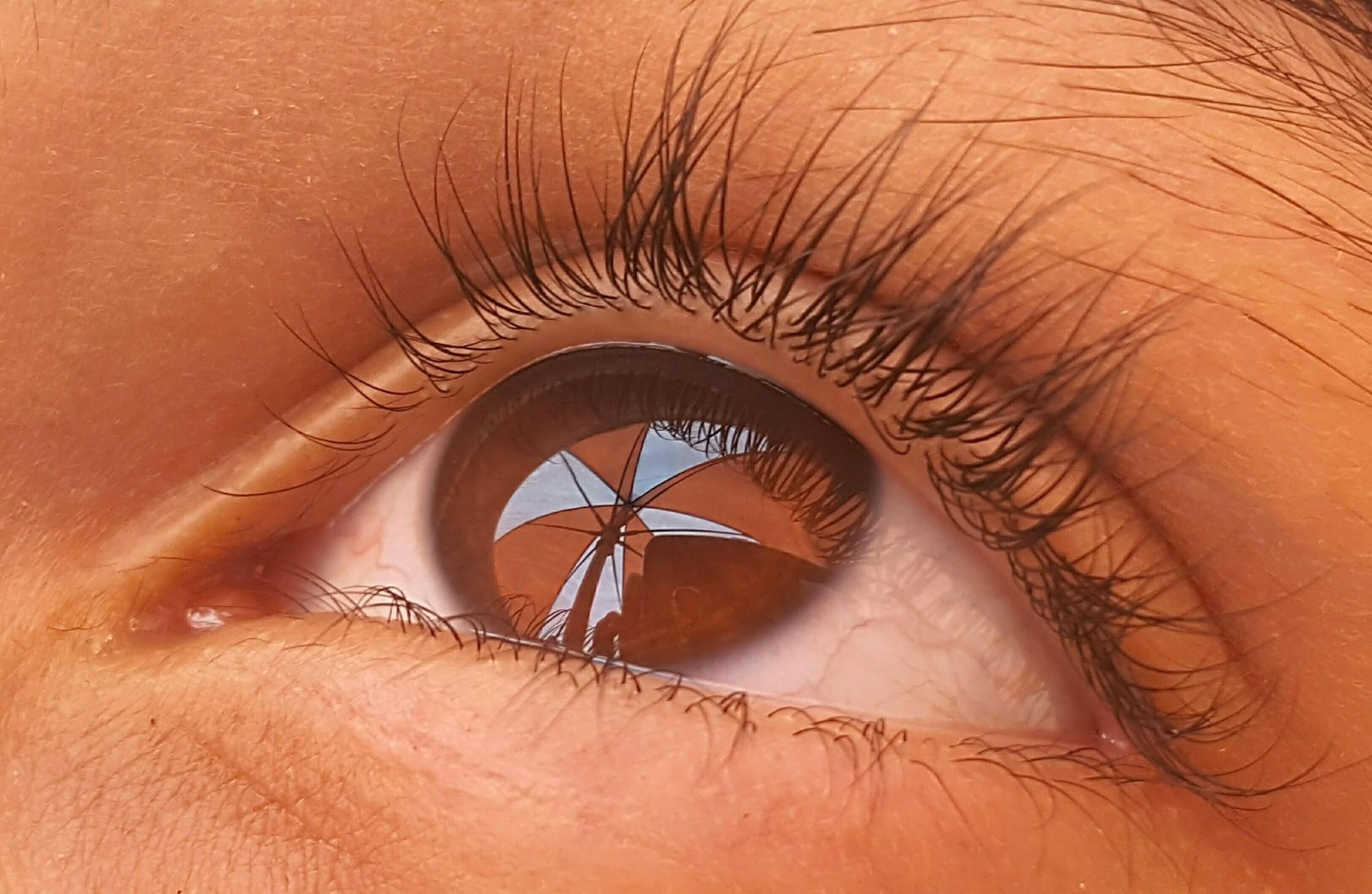If you’re tired of glasses or contact lenses, you’ve probably heard of LASIK, and maybe Refractive Lens Exchange (RLE) too. Both can reduce or even eliminate your need for eyewear, but they work in different ways.
Before jumping in, it’s important to understand how they work and which one fits your eyes, age, and lifestyle better.
Let’s break it down in a way that helps you weigh the trade-offs before you decide.
What Is Refractive Lens Exchange (RLE)?

RLE is a surgical procedure where the eye’s natural lens is removed and replaced with an artificial intraocular lens (IOL).
It’s commonly recommended for individuals over 40 who are dealing with:
- Presbyopia (age-related difficulty seeing up close)
- High hyperopia (farsightedness)
- Early cataract formation
Since the lens is replaced entirely, RLE also eliminates the risk of developing cataracts in the future. It’s also ideal for people who aren’t good candidates for LASIK, such as those with very high prescriptions or thin corneas.
What Is LASIK?

LASIK (Laser-Assisted In Situ Keratomileusis) is a laser vision correction procedure that reshapes the cornea, allowing light to focus more accurately on the retina.
It’s best suited for people aged 18 to 40 with stable prescriptions, and works especially well for correcting:
- Mild to moderate myopia (nearsightedness)
- Astigmatism
For those in their early 40s, monovision LASIK is also an option, where one eye is corrected for distance and the other for near vision. Your brain adapts to this difference, allowing for a greater range of vision without glasses or contact lenses for many daily activities.
RLE vs. LASIK: What are the Key Differences?
If you’re unsure whether RLE or LASIK is the better choice, the quickest way to understand the differences is to look at them side by side.
The comparison below highlights the pros and cons of refractive lens exchange and LASIK. See how they stack up in age suitability, vision correction range, recovery time, long-term outcomes, and more.
| Feature | Refractive Lens Exchange (RLE) | LASIK |
| Target Age Group | 40+ | 18–40 |
| Vision Problems | Presbyopia, high hyperopia, early cataracts | Myopia, astigmatism |
| Surgical Method | Replace natural lens with IOL | Reshape cornea with laser |
| Invasiveness | Intraocular (inside the eye) | Corneal (surface-level) |
| Reversibility | Not reversible | Not reversible |
| Success Rate | Very high (90–95%) | Very high (over 96%) |
| Vision Recovery Time | Vision usually improves gradually, with most patients adjusting within 1–2 weeks. | Most patients notice clearer vision within 24–48 hours, and functional vision recovery is typically 1–7 days. |
| Cost in Malaysia | Higher (due to lens implant) | Lower |
| Long-Term Outcome | Permanent, eliminates cataracts | May need reading glasses with age |
| Candidacy Limitations | Not suitable for people with advanced eye diseases | Not suitable for people with thin corneas, unstable vision, severe dry eye or advanced eye disease |
This comparison gives a snapshot, but remember: your personal eye health and lifestyle goals carry more weight than the numbers alone.
It’s best to consult an eye doctor to learn more about the success rates of refractive lens exchange and LASIK, the costs, and the finer details of each procedure before making a life-changing decision.

If you want a quick glance at the benefits and risks of RLE and LASIK as well as how they perform in different aspects, the following sections will break down each category so you can see which suits your situation better.
Benefits of Each Procedure
RLE
- Long-term fix for presbyopia and high hyperopia
- No risk of developing cataracts later in life
- Option to implant multifocal or EDOF lenses for wider range of vision
LASIK
- Minimally invasive, corneal-based procedure
- Quick vision recovery, often within days
- Ideal for younger adults under 40 with stable prescriptions
Risks and Considerations
RLE
- Intraocular surgery carries a small but real risk of infection or retinal detachment
- Visual adjustment may take longer compared to LASIK
- Higher upfront cost
LASIK
- Possibility of dry eyes, especially if pre-existing
- Possible glare or halos, particularly in low light
- Corneal reshaping is permanent and can’t be undone
- Not suitable for patients with thin corneas or unstable prescriptions
Recovery Time and Aftercare
LASIK
- Most patients achieve clear vision usually within 24–48 hours, with most patients resuming normal routines quickly
- Requires prescription eye drops for weeks to prevent infection and promote healing
- Minimal lifestyle restrictions on daily activities beyond avoiding eye rubbing or swimming for the first 1-2 weeks
RLE
- Takes longer for your brain and eyes to fully adapt to the new lens, with vision improving steadily over 1–2 weeks
- Requires prescription eye drops for a few weeks to ensure proper healing
- Follow-up appointments are more frequent in the early stages to monitor adaptation and healing, making aftercare slightly more intensive than LASIK
Cost Comparison in Malaysia
LASIK generally has a lower upfront cost (typically a few thousand ringgit per eye) while RLE has a higher initial cost due to the use of intraocular lenses and the complexity of the surgery.
Although LASIK’s affordability is appealing, the long-term RLE procedure outcomes, like eliminating the need for future cataract surgery and reducing reliance on reading glasses, can make it a worthwhile investment for the right patients.
RLE Compared to LASIK: Who Should Choose What?
Consider RLE if:
- You’re over 40 and rely on reading glasses
- You have early cataracts or very high prescriptions
- Your corneas are too thin for LASIK
Consider LASIK if:
- You’re under 40 and want a quick, low-risk solution
- Your vision has been stable for at least a year
- You lead an active lifestyle and want minimal downtime
The success rates of RLE and LASIK are both excellent. The best choice often comes down to these considerations and how they align with your lifestyle goals.

Frequently Asked Questions About RLE and LASIK
Both procedures are considered safe when performed by experienced surgeons. The main difference is that LASIK is a corneal procedure, while RLE is an intraocular procedure. This means RLE carries slightly higher surgical risks, while LASIK has surface-related risks such as dry eye or corneal complications.
Yes, in some cases. While uncommon, LASIK can be performed after RLE to fine-tune small residual vision errors if needed.
The implanted artificial lens is permanent and designed to last a lifetime. Unlike the natural lens, it won’t develop cataracts or wear out over time.
Making the Right Choice for Your Eyes
LASIK and RLE are both excellent procedures, but they serve different needs. Your age, eye health, lifestyle and long-term vision goals should drive the decision, not just the price tag.
If you’re unsure which option is best for you, the safest step is to get a comprehensive eye assessment at a trusted eye centre. An eye specialist can help you understand the benefits and risks of each procedure and recommend what fits your eyes best.
Check out our VISTANow blog page for more insights on eye care.



